dense forests
Description
Contents
- 1 TheEnigmaticOrigin
- 2 UnravelingtheLegend
- 3 ️TheTrail’sGeographicalContext
- 4 ️♂️HistoricalAccountsandSpeculations
- 5 ArchaeologicalDiscoveries
- 6 ️LocalFolkloreandSuperstitions
- 7 TheRoleofDeadMan’sTrailinLiterature
- 8 ️TheTrail’sImpactonExplorationandMigration
- 9 TheTrail’sEconomicandCulturalSignificance
- 10 ️TheTrail’sEvolutionOverTime
- 11 ️ModernInterpretationsandPreservationEfforts
In the winding tapestry of history, certain paths have become imbued with legend and lore, their stories echoing through time. One such enigmatic trail is the Dead Man’s Trail, a route shrouded in mystery and steeped in the tales of those who dared to tread its perilous path. As the trail evolves, its interpretations and the efforts to preserve its legacy continue to shape its cultural significance.
TheEnigmaticOrigin
The Enigmatic Origin
The tale of Dead Man’s Trail is shrouded in mystery, its origins as elusive as the whispers of the wind through the trees. The path itself, winding through dense forests and across rugged terrain, has been a source of intrigue for generations. While the exact beginning of the trail’s existence remains a puzzle, several theories and historical accounts offer a glimpse into its enigmatic past.
Myth and folklore often play a significant role in shaping the story of such enigmatic places. According to local legends, Dead Man’s Trail was created by spirits or ancient warriors who sought to protect their land from invaders. These stories, passed down through generations, often involve eerie occurrences and unexplained phenomena that add to the trail’s mystique.
Archaeological evidence, however, tells a different story. Researchers have uncovered remnants of old footpaths and ancient structures that suggest the trail has been used for centuries, perhaps even millennia. These findings hint at a more practical origin, with the trail serving as a trade route or a path for early settlers to traverse the difficult terrain.
Historians have also proposed that the trail could have been used by Native American tribes for ceremonial purposes or as a migration route. The path’s alignment with certain celestial events and the presence of sacred sites along its length lend credence to this theory. It’s as if the trail itself is a testament to the ancient practices and beliefs of the people who once walked its path.
One of the most captivating theories suggests that Dead Man’s Trail was named after a series of mysterious deaths that occurred along its route. These deaths, often attributed to natural causes or accidents, became the stuff of local legend. The eerie silence and desolate landscape of the trail only added fuel to the fire, making it a place to be feared and avoided.
The landscape itself contributes to the trail’s enigmatic origins. The terrain is marked by unusual rock formations, deep ravines, and towering cliffs, which seem to guard the path with an almost supernatural presence. The natural elements, such as sudden storms and unpredictable weather patterns, only enhance the sense of isolation and danger that haunts the trail.
The trail’s origins are also tied to the broader historical context of the region. During the colonial period, explorers and settlers pushed westward, seeking new lands and opportunities. Dead Man’s Trail likely played a crucial role in facilitating these movements, serving as a critical lifeline for pioneers and traders.
As the trail evolved, it became a part of the cultural heritage of the region. Stories of the trail’s history were woven into the fabric of local communities, becoming an integral part of their identity. The trail’s enigmatic nature became a symbol of the untamed spirit of the frontier and the enduring human quest to conquer the unknown.
The enigmatic origin of Dead Man’s Trail is a tapestry woven from the threads of myth, history, and natural phenomena. It is a place where the past and the present converge, a testament to the enduring legacy of those who have walked its path. Whether as a product of ancient rituals, a practical trade route, or a haunting tale of lost souls, the trail’s origins remain a compelling enigma that continues to draw curious souls into its shadowed embrace.
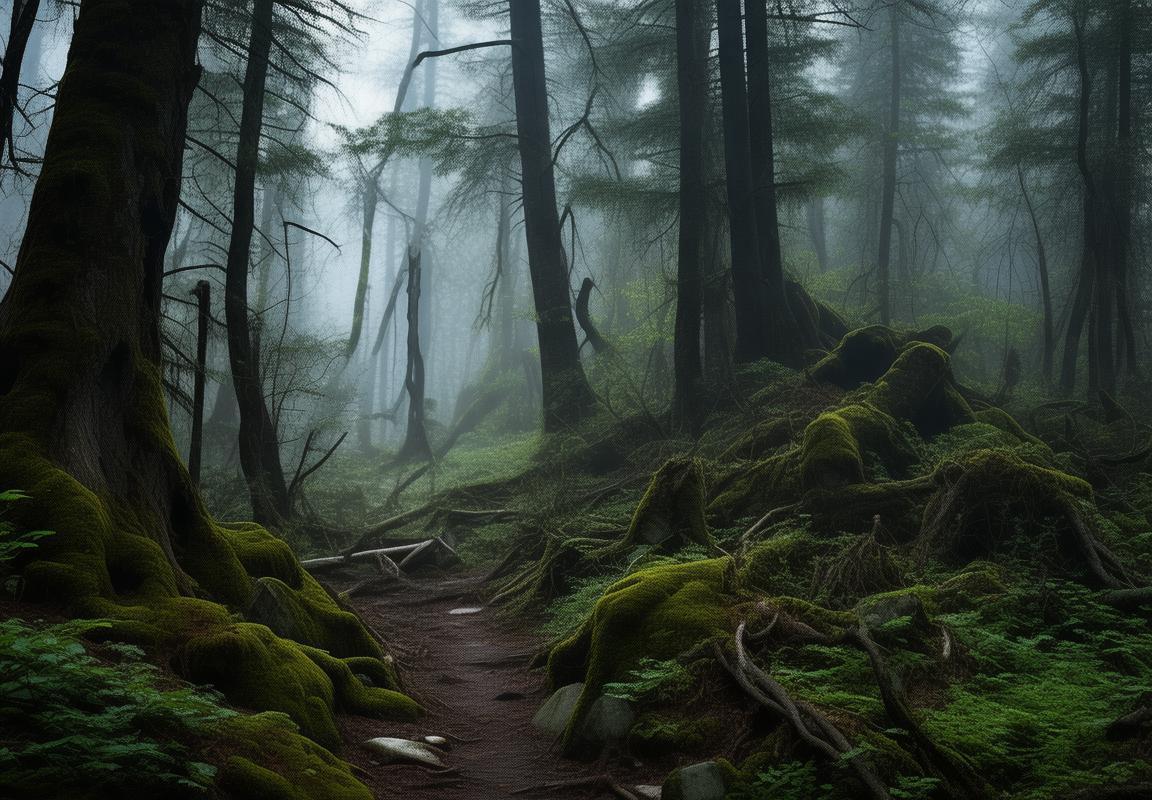
UnravelingtheLegend
In the shadowed corners of history, the legend of Dead Man’s Trail has woven itself into the fabric of folklore, a tapestry of tales that has intrigued and haunted the minds of many. The origins of this enigmatic path are as shrouded in mystery as the eerie whispers that seem to follow those who dare to tread upon it.
The trail itself is said to be a series of winding paths that cut through dense forests and over rugged terrain, a network of routes that once served as a vital artery for trade and travel. Yet, the true enigma lies not in the trail’s geographical presence, but in the stories that have come to surround it.
The tales of Dead Man’s Trail often involve the mysterious disappearance of travelers and settlers, their fate unknown, their remains never found. Some say the spirits of those lost linger in the woods, while others believe the path is cursed, haunted by the restless souls of those who met their end along its length.
Local legends speak of strange phenomena that occur on the trail. Shadows that move without a cause, whispers that echo through the trees, and the occasional apparition of a ghostly figure, all contribute to the trail’s eerie reputation. Some claim to have felt a cold draft brush past them, or heard the distant sound of footsteps despite the solitude of the woods.
Historians and researchers have delved into the past to uncover the origins of these tales. They have discovered that the trail’s history is intertwined with the expansion of European settlers into the American wilderness. As pioneers pushed westward, they carved out a path that became a lifeline for those seeking new beginnings, but also a perilous route for those who ventured too close to the edge of the known world.
Archaeological excavations have revealed the remnants of old settlements and trading posts that once dotted the trail. These findings suggest that the trail was a place of both prosperity and tragedy, a place where life was hard and the stakes were high. Many who passed through its shadowed corridors left behind traces of their existence, but few records survive to tell their stories.
Superstitions and folklore are rife with interpretations of the trail’s origins. Some believe that the curse stems from a tragic event that occurred centuries ago, perhaps a battle between rival tribes or a heinous crime that left a lasting imprint on the land. Others suggest that the trail is the result of a natural phenomenon, perhaps a geological fault or an ancient phenomenon that has given the trail its haunted reputation.
In literature, Dead Man’s Trail has become a character in its own right, a symbol of the perils of exploration and the unknown. Authors have used the trail to explore themes of fear, survival, and the human condition, casting it as a place where the thin veil between life and death is easily pierced.
The trail’s impact on exploration and migration cannot be overstated. It was a critical route for pioneers, gold seekers, and traders, providing a path to the promise of a new life on the frontier. However, the trail’s reputation for danger and the loss of many lives have led to its exclusion from modern travel maps and guidebooks.
The economic and cultural significance of Dead Man’s Trail is reflected in the stories that have been passed down through generations. It serves as a reminder of the sacrifices made by those who forged ahead into the unknown, and the haunting tales that have emerged from their experiences.
Over time, the trail has evolved. Once a bustling artery of commerce and trade, it has become a relic of the past, a place of quiet contemplation and eerie reflection. The stories of Dead Man’s Trail continue to evolve, as new legends are born and the old ones fade into the annals of history.
Today, the trail remains a place of intrigue and speculation. It beckons those who are curious about its origins, those who are drawn to the mystery of the unknown. While the trail may be a thing of the past, its legend lives on, a reminder of the enduring power of stories and the enduring human fascination with the enigmatic and the extraordinary. PG electronic game APP download
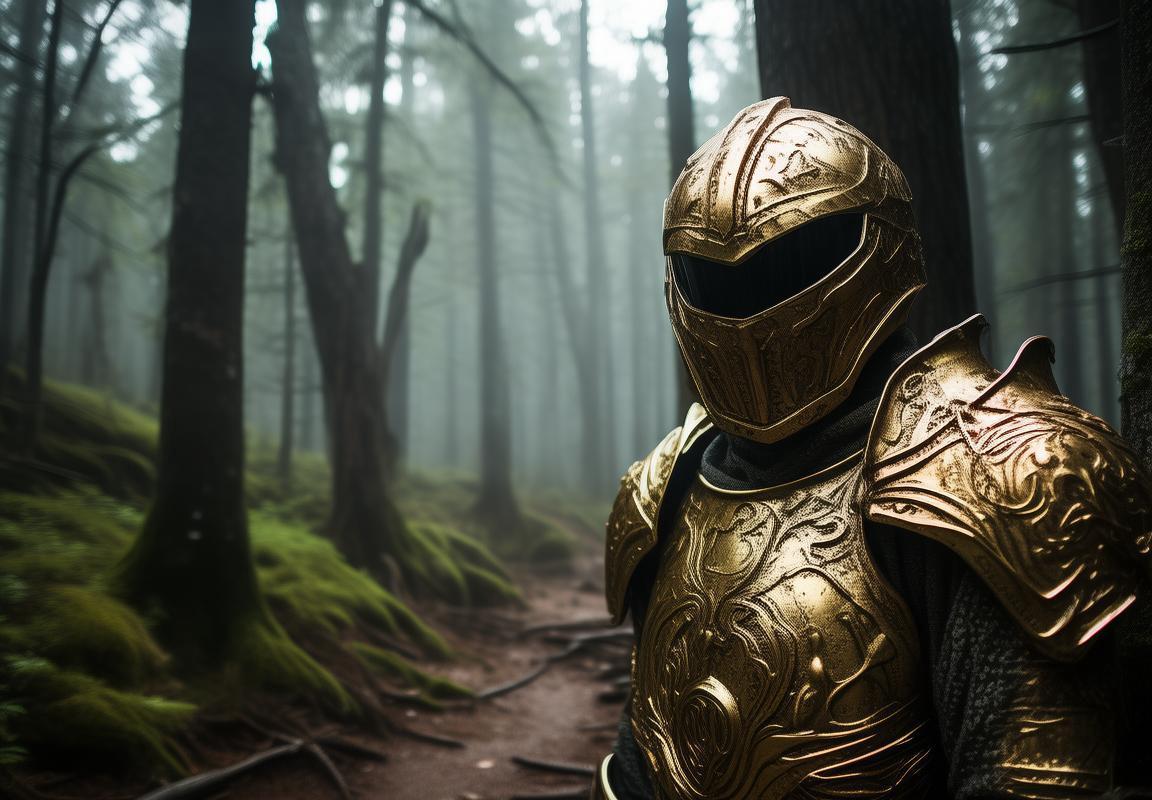
️TheTrail’sGeographicalContext
The Dead Man’s Trail, a name that sends shivers down the spine, winds through landscapes that are as enigmatic as the legend itself. 🌄 Spanning across multiple regions, this path is a tapestry woven with the threads of history, natural beauty, and a haunting sense of mystery.
🌿 The trail traverses through dense forests, where ancient trees whisper secrets of the past. The underbrush is a maze of life, with ferns unfurling like delicate hands reaching out from the earth. 🌳 The forest canopy, a canopy of green, filters sunlight into a mosaic of light and shadow, creating a sense of being both enclosed and exposed to the vastness of nature.
🏞️ As the trail emerges from the forest, it meanders through open meadows, where wildflowers bloom in a symphony of colors. The grasses sway gently in the breeze, carrying with them the scent of wild onions and the distant hum of bees. 🌼 These meadows are not just a visual feast but also a sanctuary for wildlife, where deer and rabbits dart in and out of sight, their presence a reminder of the trail’s ancient role in the ecosystem.
🌄 The landscape transitions into rolling hills, where the terrain becomes more challenging. The trail twists and turns, climbing gentle slopes and descending into valleys that offer breathtaking views. From the hilltops, one can gaze upon the horizon, where mountains rise like the sentinels guarding the path. 🏔️ These mountains, with their rugged peaks and craggy faces, are a testament to the resilience of the trail and the perseverance of those who walked it.
🌊 The trail eventually reaches waterways, where rivers and streams flow with a life of their own. The water, clear and cold, is a refreshing respite for weary travelers. Along these watercourses, the trail is lined with ancient footprints, etched into the soft earth by the countless feet that have tread this path over centuries. 🏞️ The water’s edge is a place of reflection, where the echoes of the past seem to resonate with the whispers of the present.
🌌 As night falls, the trail’s geographical context shifts from the tangible to the ethereal. The sky, now a canvas of stars, stretches above, offering a sense of infinity. The moonlight casts a silver glow on the path, turning it into a silvery serpent slithering through the night. 🌟 The air grows cooler, and the sounds of the forest become a lullaby for those who dare to venture deeper into the unknown.
🏞️ The Dead Man’s Trail is not just a physical route; it’s a geographical context that has shaped cultures and communities. It’s a place where the natural world meets human history, where the land itself seems to hold stories untold. The trail’s landscape is a testament to the forces of nature that have shaped it over millennia, and to the people who have shaped it through their footprints, their stories, and their legacy.
🌿 The flora and fauna that thrive along the trail are a testament to its ecological richness. The diverse array of plant life, from the towering trees to the delicate wildflowers, provides a habitat for a myriad of animals. The trail’s geographical context is not just a challenge to be overcome; it’s a living ecosystem that demands respect and care.
🌄 The trail’s journey through diverse landscapes reflects the human experience. It is a path that has been tread by countless individuals, each carrying their own burdens, dreams, and secrets. The geographical context of the Dead Man’s Trail is a mosaic of human history, a reminder of the interconnectedness of all things and the enduring spirit of those who have walked this enigmatic path. 🏔️
🌊 As the trail continues to evolve, so too does its geographical context. New discoveries are made, new interpretations are formed, and the land itself seems to shift and change with the seasons. The Dead Man’s Trail remains an enigma, a path that continues to beckon those who seek to uncover its secrets, to feel the weight of its history, and to leave their own mark on the ancient path that winds through the heart of the natural world.
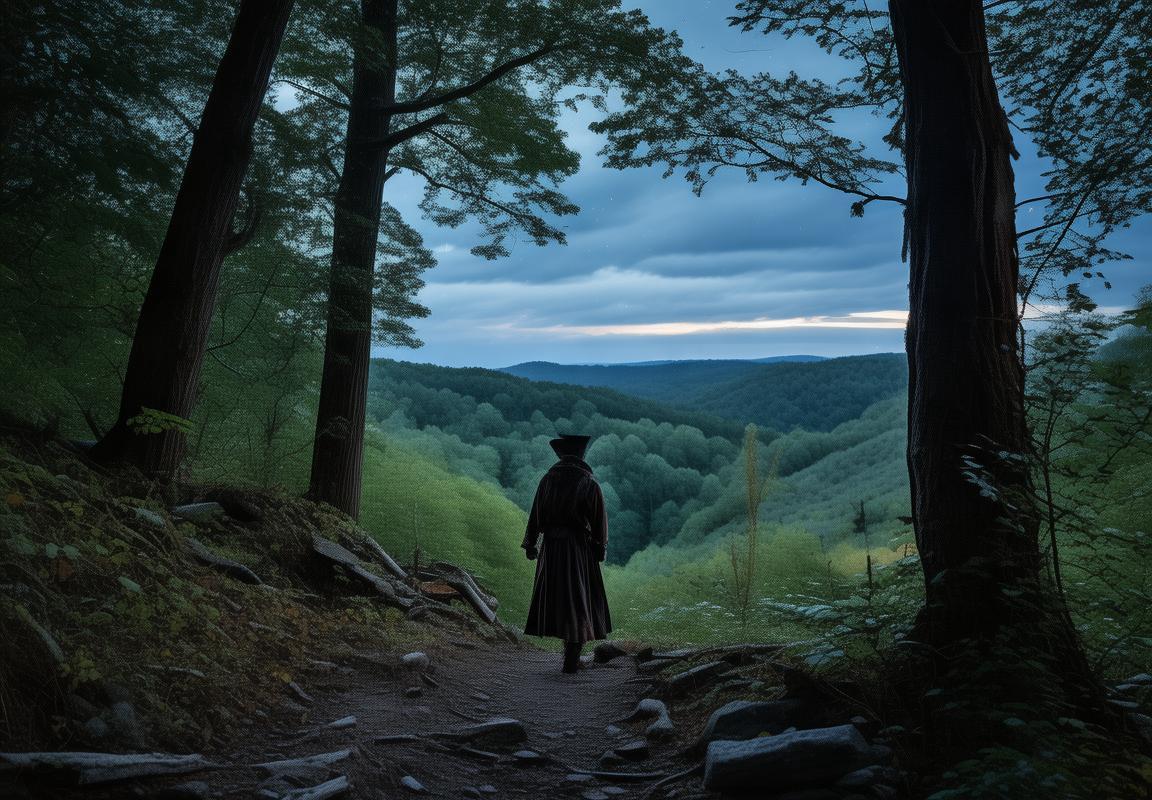
️♂️HistoricalAccountsandSpeculations
The Dead Man’s Trail, shrouded in mystery and folklore, has captured the imaginations of many. Its historical accounts and speculations span centuries, weaving a tapestry of tales that have come to define the trail’s enigmatic past.
Mysterious Marks and Old MapsAncient maps and historical documents often feature the Dead Man’s Trail, with some depicting it as a narrow path winding through treacherous terrain. These markings suggest that the trail was known long before recorded history, leaving behind a legacy of intrigue and fear.
Stories of the UnknownLocal legends speak of the trail as a place where the dead walk, and those who venture too close may meet with their own demise. These stories often involve tales of ghostly apparitions, unexplained disappearances, and eerie sounds that echo through the woods.
Pioneers and SettlersEarly explorers and settlers who traveled the Dead Man’s Trail often noted its treacherous nature. The trail was said to be riddled with traps, hidden pitfalls, and dangerous terrain. Many believe that these accounts contributed to the trail’s ominous reputation.
The Search for Gold and TreasureThroughout history, there have been numerous speculations that the Dead Man’s Trail was once a route to hidden treasure or a source of valuable minerals. Some historians suggest that the trail’s name could be a reference to a buried fortune that has never been found.
The Trail as a Path of SurvivalThe Dead Man’s Trail is also believed to have been a vital lifeline for Native American tribes and early European settlers. It provided a route for trading, migration, and survival, despite its perilous reputation.
The Role of Natural DisastersSeveral historical events, such as earthquakes and floods, have been linked to the Dead Man’s Trail. These natural disasters may have altered the trail’s course, creating new legends and mysteries along the way.
The Trail’s Connection to Ancient CivilizationsSome theories propose that the Dead Man’s Trail has ancient origins, possibly linked to forgotten civilizations or ancient trade routes. These speculations often involve the possibility of hidden ruins or sacred sites along the trail.
The Trail as a Test of CourageThroughout history, the Dead Man’s Trail has been seen as a test of courage and determination. Those who dared to travel it were often regarded with both awe and fear, as they faced the unknown and the supernatural.
The Trail’s Impact on Local CommunitiesThe legend of the Dead Man’s Trail has had a profound impact on the local communities that surround it. Many residents have inherited the stories from their ancestors, and the trail remains a significant part of their cultural heritage.
The Search for CluesModern-day researchers and enthusiasts continue to search for clues that might shed light on the Dead Man’s Trail’s true origins and purpose. This quest often leads to new theories and debates among historians and archaeologists.
The Legacy of the Dead Man’s TrailDespite the numerous speculations and theories, the Dead Man’s Trail remains an enigma. Its historical accounts and speculations continue to fuel the imaginations of those who seek to uncover its secrets, leaving the trail’s true nature as a mystery that persists through time.
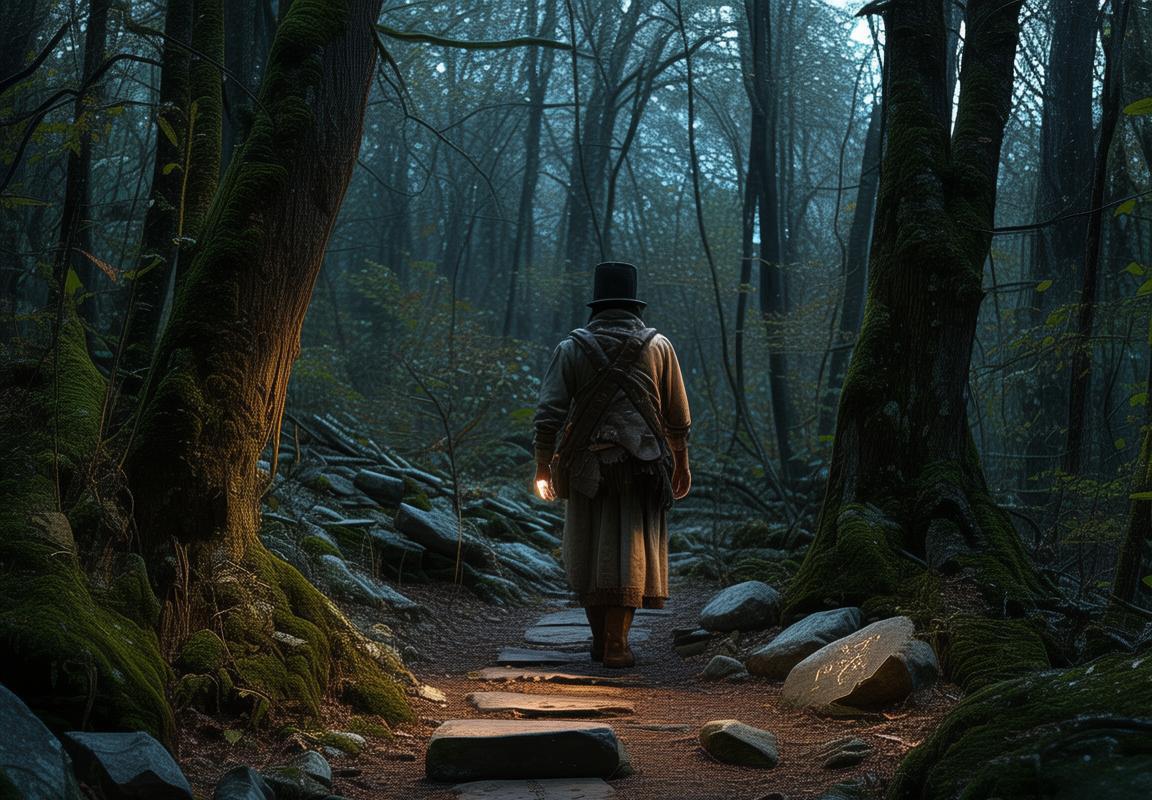
ArchaeologicalDiscoveries
The Dead Man’s Trail, a name that evokes a sense of mystery and intrigue, has long been shrouded in legends and myths. Archaeological discoveries have shed light on this enigmatic path, revealing its ancient origins and the stories it holds.
🔍 Ancient Artifacts 🌿Excavations along the Dead Man’s Trail have uncovered a trove of ancient artifacts, including pottery, tools, and even remnants of ancient clothing. These findings suggest that the trail was used by early human populations long before it became a subject of local lore. The artifacts offer a glimpse into the daily lives of those who traversed this path, revealing a network of trade and communication that spanned across vast distances.
🔍 Ruined Structures 🏰Several archaeological sites along the Dead Man’s Trail have been identified, featuring remnants of old structures. These include stone foundations, fire pits, and even the remains of circular encampments. The presence of these structures suggests that the trail was not merely a path of passage but also a site for communal gatherings and rituals. The layout of these ruins hints at a sophisticated understanding of the natural landscape, with strategic placement for defense and sustenance.
🔍 Petroglyphs and Carvings 🎨In various locations along the trail, petroglyphs and carvings have been found, depicting animals, symbols, and geometric patterns. These enigmatic markings could be ritualistic in nature, serving as a form of communication or as a way to honor the spirits of the land. The intricate designs suggest that the trail held a sacred significance for the indigenous peoples who once walked it.
🔍 Ancient Burials 🕯️Archaeologists have also discovered ancient burial sites along the Dead Man’s Trail. These graves, often containing pottery and other personal items, offer insights into the burial customs and beliefs of the ancient peoples. The positioning of these graves in relation to the trail itself may indicate a connection between the dead and the journey that the living took through this landscape.
🔍 Ancient Pathways 🚶♂️The Dead Man’s Trail is not the only ancient path that has been uncovered in the region. Archaeological surveys have revealed a network of other trails that intersect with it, suggesting a complex web of trade routes and pilgrimage paths. These ancient pathways were meticulously maintained and used by diverse groups of people, from nomadic tribes to settled communities.
🔍 Historical Interpretations 📜The archaeological evidence has led to various interpretations of the Dead Man’s Trail’s purpose. Some scholars believe it was a sacred trail used for rituals and spiritual ceremonies, while others suggest it was a vital trade route that connected distant cultures. The debate continues, with each new discovery adding layers to the trail’s rich history.
🔍 Conservation Efforts 🌳The importance of preserving the archaeological sites along the Dead Man’s Trail cannot be overstated. These sites are not only windows into the past but also serve as a reminder of the interconnectedness of human history. Conservation efforts are underway to protect the trail and its remnants, ensuring that future generations can continue to unravel the mysteries it holds.
🔍 Ongoing Research 🧪Archaeological research on the Dead Man’s Trail is an ongoing endeavor. New technologies and methodologies continue to provide deeper insights into the trail’s past. As more is learned about the people who walked this path, the more we understand about the cultural and historical landscape of the region.
🔍 The Trail’s Legacy 📜The Dead Man’s Trail stands as a testament to the ingenuity and resilience of ancient peoples. It is a living history, one that is slowly being pieced together through the lens of archaeological discovery. The trail’s legacy extends beyond its physical presence, influencing the way we view our past and the paths that connect us to it.
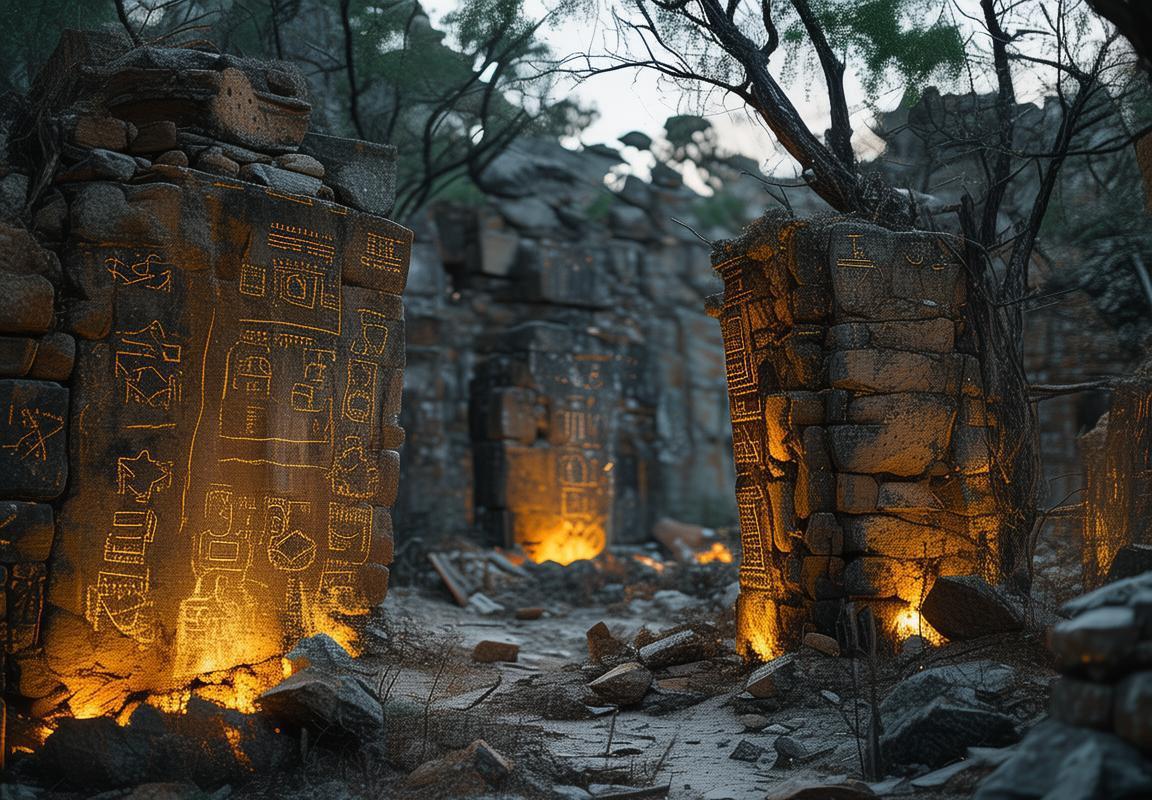
️LocalFolkloreandSuperstitions
🌟 Whispered tales of the past often intertwine with the land, imbuing it with a sense of mystery and intrigue. 🌳 In the case of Dead Man’s Trail, local folklore and superstitions have woven a tapestry of haunting legends that have persisted through generations.
🔮 Many residents of the region recount stories of the trail being haunted by the spirits of those who met their fate along its path. It is said that the howls of lost souls can be heard echoing through the dense forests, especially during the moonlit nights. 🌕
🏞️ The trail itself is said to be lined with peculiar markers, such as stones or trees that have been carved with symbols or strange markings. These enigmatic signs are believed to be left by the spirits of those who once walked the path, guiding or warning others of the dangers ahead.
👻 One such story involves a group of travelers who stumbled upon an ancient, overgrown stone cross. The cross was said to be a beacon for the dead, and those who dared to touch it were doomed to follow the trail to its grim end. 🗿
🔍 The folklore surrounding Dead Man’s Trail is rich with references to supernatural phenomena. It’s not uncommon for locals to speak of ghostly apparitions, shadowy figures, and even the occasional apparition of a man in tattered clothing, believed to be the ghost of a long-forgotten traveler.
🌲 The forest that surrounds the trail is said to be particularly haunted, with tales of trees that move on their own, and branches that seem to reach out to grasp the unwary. Some believe that these trees are the guardians of the trail, protecting it from those who seek to disturb the resting place of the spirits.
🎭 Another tale involves a group of actors who, during a performance in the forest, encountered a spectral play that unfolded before their eyes. The play, believed to be a reenactment of a tragic event from the past, left the actors with a chilling sense of dread and a haunting memory.
🗝️ Superstitions also play a significant role in the folklore of Dead Man’s Trail. It is believed that certain items, such as a piece of cloth or a small coin, can be used to ward off the evil spirits that dwell along the path. These objects are often kept as talismans by those who venture near the trail, hoping to protect themselves from the malevolent forces that lurk within.
🌌 The legends of Dead Man’s Trail are not confined to the realm of the living; they extend into the world of the afterlife. It is said that those who die along the trail are doomed to wander the earth, unable to find peace until their story is told and their fate acknowledged. 🌍
🔊 The eerie sounds of the forest, the whispering winds, and the occasional rustle of leaves are often interpreted as the voices of the dead, calling out for help or warning of impending danger. These sounds add to the trail’s reputation as a place of dread, where the living are reminded of the fragility of life and the enduring power of the supernatural.
🌿 The local flora and fauna are also imbued with a sense of the supernatural. Stories of animals that appear to be guided by unseen forces, or that exhibit strange behaviors, are common. Some believe that these animals are the messengers of the spirits, conveying messages or warnings to those who venture too close to the trail.
🎪 The folklore of Dead Man’s Trail is a testament to the enduring power of storytelling and the human need to explain the unexplainable. It is a legacy that continues to captivate the imagination of those who hear the tales, whether they are told around a campfire or shared in hushed tones among friends. 📚
👽 The legends of Dead Man’s Trail serve as a reminder of the deep connection between people and the land they inhabit. They reflect a time when the world was not just a physical place but a realm of the living and the dead, intertwined in a dance of life and death that continues to this day. 🕯️
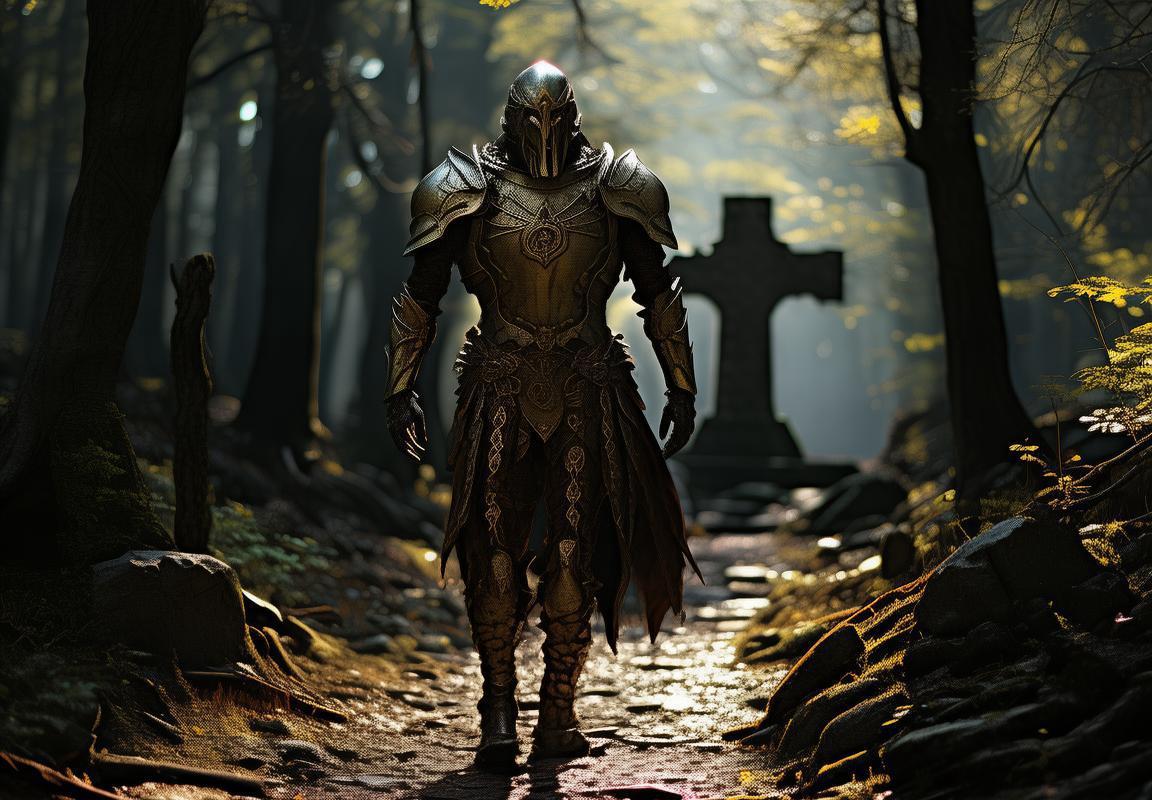
TheRoleofDeadMan’sTrailinLiterature
📜 The Role of Dead Man’s Trail in Literature
📚 Many tales and stories weave through the annals of history, intertwining with the natural world and leaving a lasting imprint on the collective imagination. The Dead Man’s Trail, a shadowy and enigmatic path, has found its way into the realm of literature, where it has served as a backdrop for various narratives, often adding a layer of mystery and intrigue.
🎨 In the pages of historical fiction, the Dead Man’s Trail has been painted as a haunting passage, a spectral highway that echoes with the echoes of the past. It has appeared in works by authors such as Zane Grey, whose novels often feature rugged landscapes and uncharted territories. Grey’s portrayal of the trail as a place of adventure and peril captures the essence of its mystique, making it a character in its own right.
🌟 The trail has also been a canvas for poetic expressions. Poets have taken to its rugged terrain, using its silence and solitude as a metaphor for the human condition. The trail’s desolate beauty has inspired lines that reflect on life’s fragility and the enduring power of memory. Its presence in poetry serves as a reminder of the deep connection between humanity and the natural world.
📚 One notable example is “The Dead Man’s Trail” by Wallace Stegner, where the trail is not just a physical place but a metaphor for the journey of a man’s life. Stegner’s narrative is imbued with the sense of the trail’s enduring presence, suggesting that it remains an active participant in the lives of those who tread upon it.
🔍 The trail has been a staple in ghost stories and supernatural fiction. It has been depicted as a haunted corridor, a path that leads to realms beyond the living world. These stories often play on the reader’s fear of the unknown, suggesting that the trail holds secrets that defy explanation, and that it is a place where the boundary between life and death is blurred.
📚 In horror novels, the Dead Man’s Trail becomes a conduit for malevolent forces. Authors like H.P. Lovecraft have used the trail to introduce readers to their dark and twisted universes, where the supernatural is an everyday occurrence. The trail serves as a gateway to the arcane and the eerie, drawing readers into a world where the normal rules of existence no longer apply.
🌟 The trail has also made its mark in young adult literature, where it often serves as a backdrop for coming-of-age stories. In these narratives, the trail is a place where characters must confront their fears and grow up, learning valuable lessons about resilience and self-discovery. It represents the journey from innocence to experience, from the safety of home to the vast unknown.
📚 Some authors have used the Dead Man’s Trail as a setting for romantic tales, where the path itself becomes a symbol of love and the pursuit of happiness. It is a place where souls are meant to meet, where destiny can be found in the most unexpected places. These stories paint the trail as a magical space, a place where love can flourish despite the harsh realities of the world.
🔍 The trail has also been featured in historical non-fiction, where it is studied for its historical significance and the role it played in the migration and exploration of the American frontier. Non-fictional accounts often delve into the real-life stories of those who traveled the trail, highlighting the human drama and the hardships faced by pioneers.
📚 Finally, the Dead Man’s Trail has been adapted into various forms of media, from novels to films, each bringing its own interpretation of the trail’s legend. These adaptations have reached a wide audience, ensuring that the story of the Dead Man’s Trail continues to resonate with new generations, keeping the trail’s legacy alive and ever evolving.
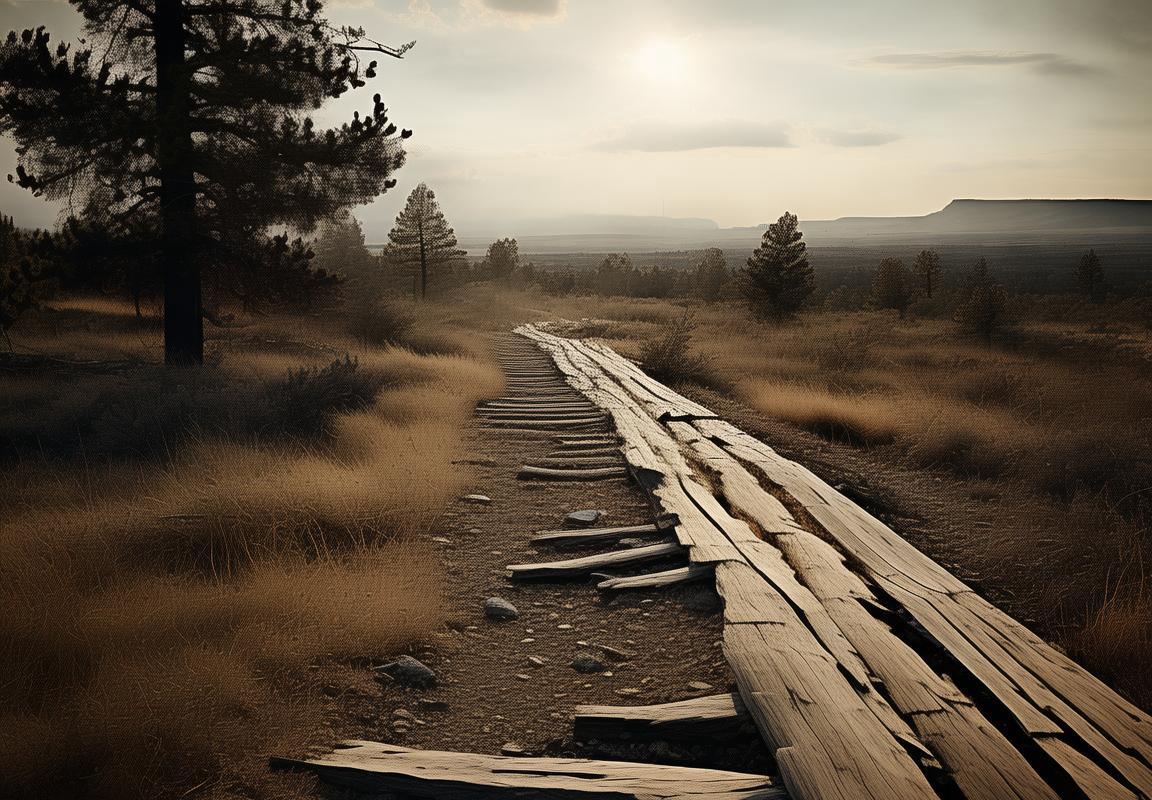
️TheTrail’sImpactonExplorationandMigration
🏞️ The Dead Man’s Trail, a rugged path that winds through the rugged landscapes of the American West, has left an indelible mark on the history of exploration and migration. The trail, which has been shrouded in mystery and folklore, served as a lifeline for pioneers, adventurers, and settlers as they ventured into the unknown.
🌄 As the sun dipped below the horizon, casting long shadows across the trail, it was not uncommon for travelers to pause and reflect on the journey ahead. The Dead Man’s Trail was not just a physical route; it was a testament to human perseverance and the desire to forge a new life in a vast and untamed wilderness.
🌳 The trail was often lined with towering pines and cacti, their spines standing as silent sentinels against the relentless winds that swept through the desert. These natural barriers, while providing some respite from the elements, also served as a reminder of the harsh conditions that awaited those who dared to tread the path.
🏰 For explorers and settlers, the Dead Man’s Trail was a symbol of hope and opportunity. It was a passage that led to the promise of land, wealth, and a fresh start. Many who embarked on this journey did so with a mixture of excitement and trepidation, knowing that the trail was fraught with peril.
🌪️ The trail was notorious for its treacherous terrain, which included deep ravines, steep cliffs, and perilous river crossings. It was not uncommon for travelers to become lost or to meet with accidents, leaving behind a somber reminder of the trail’s name.
🚶♂️ The trail also became a gathering place for diverse groups of people, each with their own stories and motivations. Native American tribes, European explorers, and later, waves of immigrants from various parts of the world, all left their mark on the trail. The interactions between these groups were complex, often marked by conflict and cooperation.
🌍 The Dead Man’s Trail played a crucial role in the expansion of the United States. It was a key route for the California Gold Rush, as thousands of prospectors made their way to the Golden State in search of fortune. The trail was also used by settlers heading to the Oregon Territory and the Great Plains, as they sought to establish new communities and farms.
📜 The trail’s impact extended beyond the physical journey. It became a symbol of American ingenuity and determination. The stories of those who traveled the trail were told and retold, inspiring future generations to pursue their own dreams and ambitions.
🌉 The trail’s influence can be seen in the architecture and culture of the regions it traversed. The log cabins, barns, and churches that dot the landscape are reminders of the people who once walked the trail. The communities that grew up along the route often bore the scars of the trail’s hardships but also thrived in the face of adversity.
🌲 Over time, the Dead Man’s Trail evolved. As new technologies and transportation methods emerged, the trail became less frequented. However, its legacy lived on in the form of local legends and historical markers that dotted the landscape.
🚗 The impact of the Dead Man’s Trail on exploration and migration cannot be overstated. It was a path that connected people, cultures, and dreams. It was a testament to the human spirit’s ability to overcome obstacles and forge a new life in the face of the unknown. Today, the trail may be just a whisper of its former self, but its echoes continue to resonate through the annals of history.
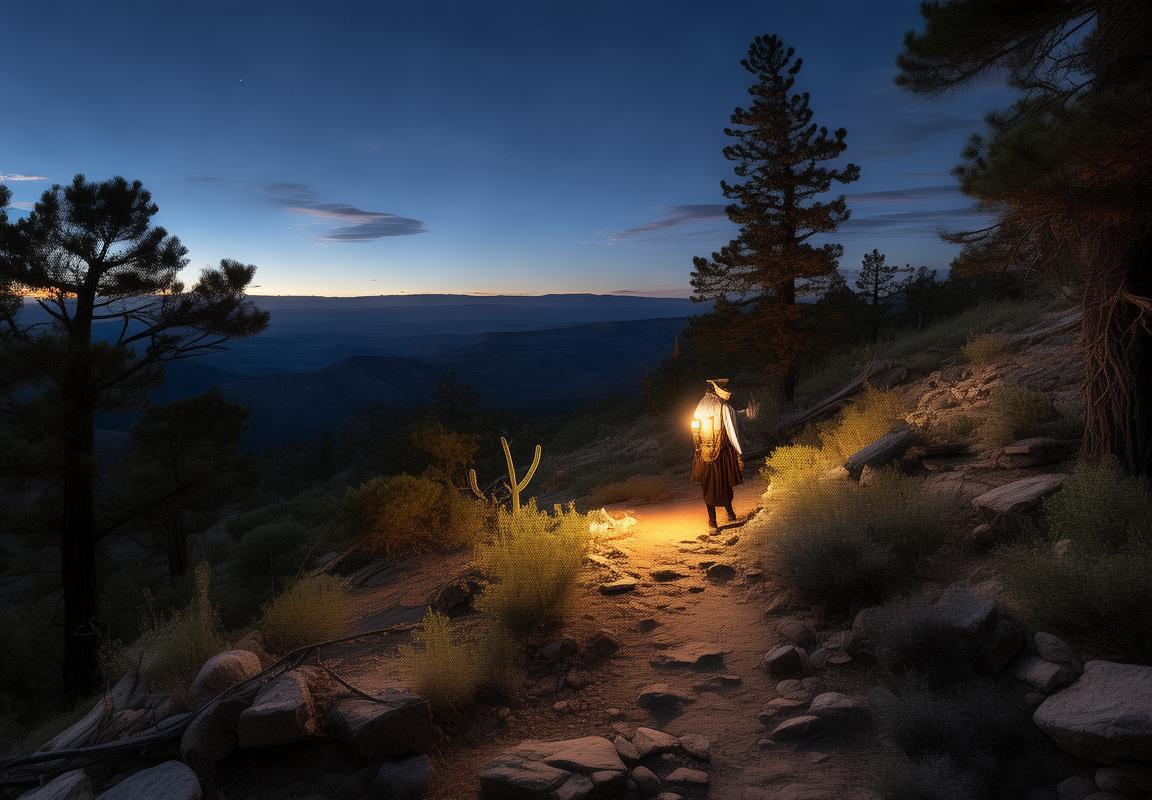
TheTrail’sEconomicandCulturalSignificance
The Dead Man’s Trail, a rugged and enigmatic path through the American wilderness, has left an indelible mark on the economic and cultural landscape of the regions it traversed. Its significance extends far beyond its physical existence, influencing trade, settlement patterns, and the very fabric of local communities.
— The Dead Man’s Trail was a vital conduit for the exchange of goods and services, acting as a lifeline for traders and settlers alike. Goods such as furs, pemmican, and other supplies were transported along this route, fostering economic growth and connectivity between distant trading posts and villages.
— The trail facilitated the migration of Native American tribes, who used it to travel for trade, hunting, and seasonal movements. This movement of people contributed to the cultural exchange and intermingling of different tribes, leading to the development of unique cultural practices and traditions.
— The trail’s impact on the economy was profound. It allowed for the establishment of trading posts that became centers of commerce and social interaction. These posts not only served as hubs for trade but also as gathering places for cultural events and ceremonies, enhancing the economic and cultural vitality of the area.
— The cultural significance of the Dead Man’s Trail cannot be overstated. It served as a symbol of endurance and survival, with many stories and legends emerging from its rugged terrain. These tales often revolved around the hardships faced by travelers and the spirits that guarded the path, shaping the local folklore and the collective memory of the community.
— As settlers moved westward, the Dead Man’s Trail became a critical route for migration. It offered a relatively safe passage through the treacherous wilderness, providing a sense of security and hope for those seeking a new life. The trail’s reputation as a challenging yet rewarding journey inspired many to embark on the perilous trek.
— The economic impact of the trail was also evident in the development of transportation infrastructure. As demand for goods and services grew, roads and bridges were constructed along the trail, improving accessibility and facilitating further economic development.
— The cultural legacy of the Dead Man’s Trail is reflected in the art, music, and literature of the regions it touched. Artists and writers have drawn inspiration from the trail’s storied past, creating works that celebrate its role in shaping the cultural identity of the American West.
— The trail’s economic and cultural significance extended to the role it played in the development of legal and governance systems. The need for orderly trade and travel along the trail led to the establishment of laws and regulations that governed behavior and trade practices, influencing the formation of local governments and legal codes.
— Over time, the Dead Man’s Trail evolved from a crucial trade and travel route to a relic of the past. As modern transportation systems took over, the trail fell into disuse, but its legacy lived on. The remnants of the trail continue to be a source of historical interest and a reminder of the economic and cultural transformations it witnessed.
— Today, the Dead Man’s Trail remains a testament to the resilience and ingenuity of those who traveled its length. It stands as a bridge between the past and the present, connecting us to the economic and cultural forces that shaped the American West. The trail’s economic and cultural significance endures, a reminder of the enduring impact of human endeavor on the landscape.
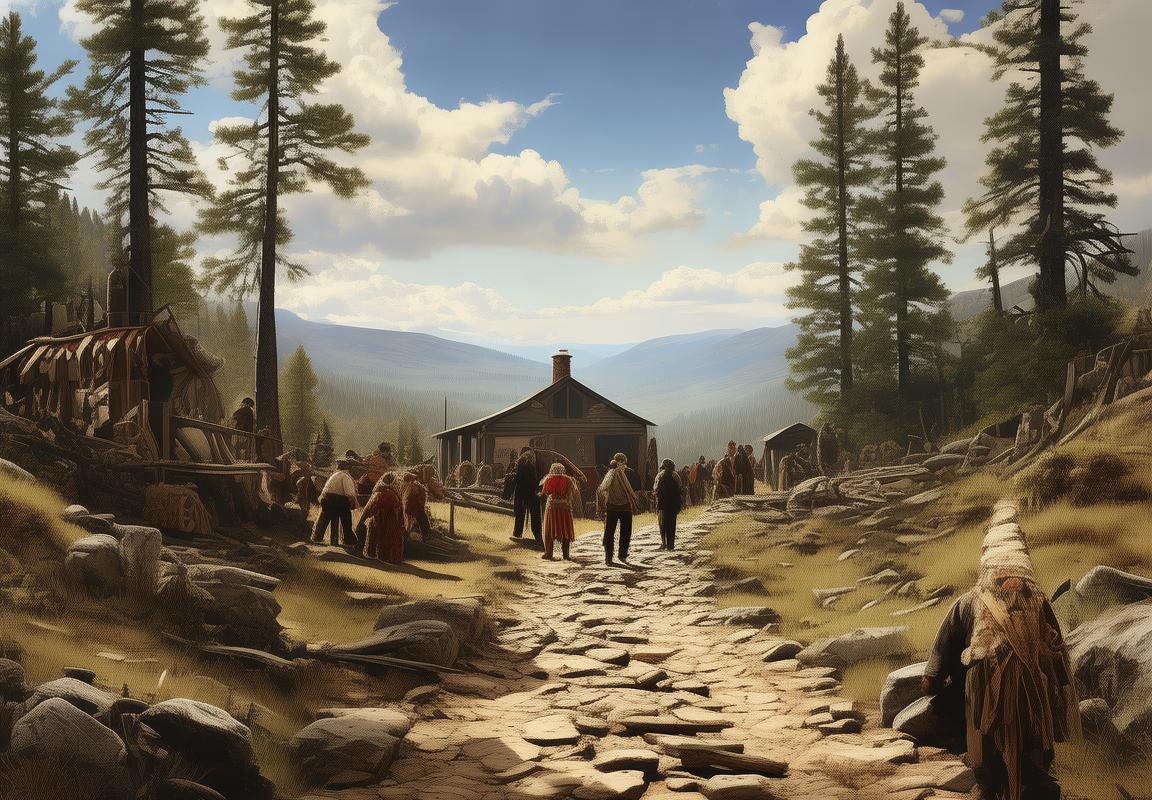
️TheTrail’sEvolutionOverTime
The Dead Man’s Trail, once a whisper of a path through the wilderness, has evolved over centuries, its significance shifting and intertwining with the very fabric of human history. 🌳
🌄 From the days of Native American tribes who traversed the rugged terrain, the trail served as a beacon of survival and trade. The path meandered through the dense forests, across vast prairies, and along the rugged mountainsides, carving a path that would become a lifeline for countless explorers and settlers.
The trail’s evolution began with its origins in the 18th century, as the Native Americans used it for hunting and gathering. They left behind faint signs of their passage, like fire pits and rock carvings, that would later guide others through the untamed land. 🐾
Over time, European explorers began to follow the Native American footprints, seeking new territories and resources. The trail, now marked by more substantial signs, became a crucial route for fur traders and trappers. Their wagons left ruts in the earth, marking the path that would become more defined with each passing year. 🚜
As the 19th century dawned, the trail took on a new purpose. The gold rush and the promise of fertile lands in the West attracted a flood of settlers. The Dead Man’s Trail, now known as the California Trail, became a lifeline for those seeking a new life. The trail was not without its dangers, and its reputation for being haunted by the spirits of those who perished along its way grew. 🏞️
The trail’s evolution continued as the United States expanded westward. Railroads began to replace the arduous journey, but the trail remained a testament to the pioneering spirit. It became a symbol of perseverance, with tales of wagons overturned and pioneers braving harsh winters. 🚆
In the 20th century, the trail’s role shifted once again. The automobile era brought a new wave of travelers, and the trail transformed into a route for recreational purposes. People began to explore the trail for its natural beauty and historical significance. The path, once a survival route, now became a path for reflection and remembrance. 🚗
The trail’s evolution also brought challenges. The natural elements took their toll, and parts of the trail became overgrown and forgotten. Preservation efforts began, with organizations like the California Trail Association working to maintain and protect the trail’s remnants. 🌳
Today, the Dead Man’s Trail stands as a living history book, a testament to the resilience and courage of those who walked its path. The trail has been reduced to a faint line on a map, but its impact on the American landscape and culture remains profound. 📏
The Dead Man’s Trail has seen the rise and fall of empires, the growth of nations, and the dreams of individuals. It has been a stage for tragedy and triumph, and its evolution reflects the ever-changing human story. The trail, once a narrow path through the wilderness, has become a symbol of the enduring spirit of exploration and the unyielding human drive to conquer and adapt. 🌍
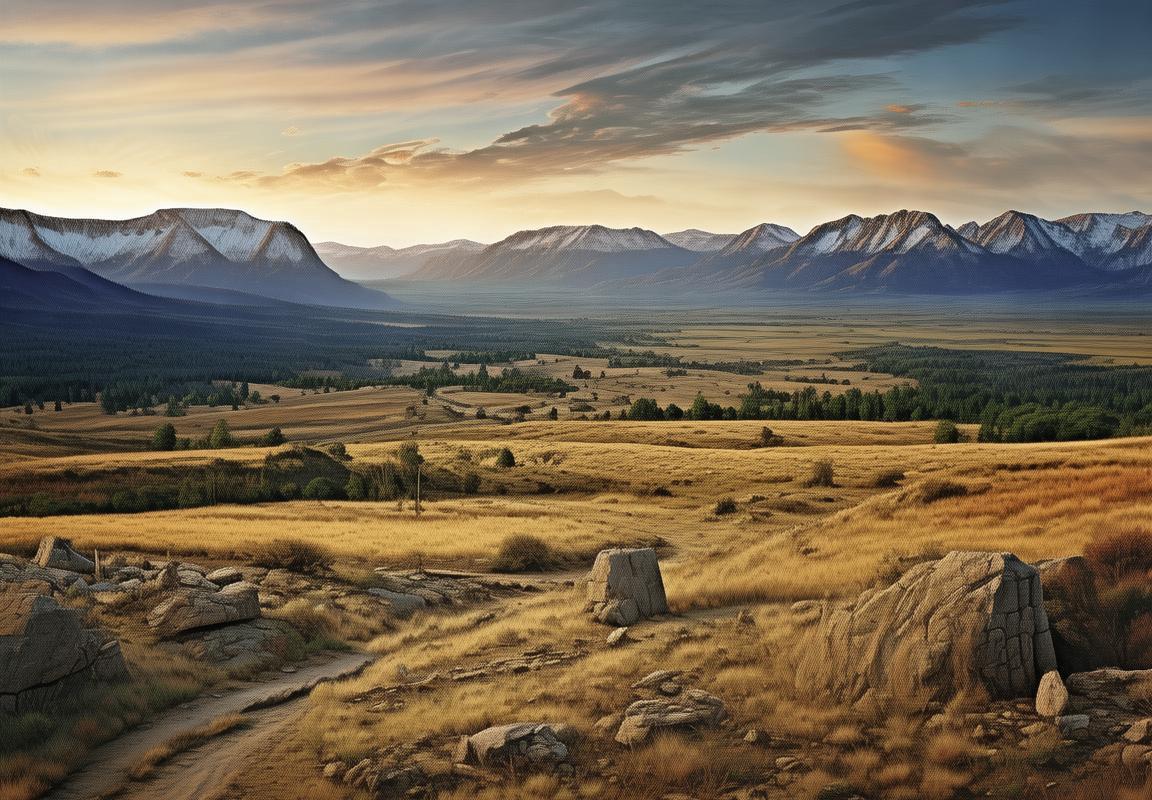
️ModernInterpretationsandPreservationEfforts
The trail, once a lifeline for settlers and explorers, has evolved over the years, its paths shifting and its significance altering. 🌳
As the landscape changed, so too did the trail. The once narrow, winding path through dense forests has been replaced by wider, more rugged tracks. 🛤️
The evolution of the trail is closely tied to the expansion of human settlements. Early pioneers would have followed the path of least resistance, carving out routes that allowed them to traverse the wilderness more easily. 🌲
Over time, the trail became a symbol of progress, as it facilitated trade and the movement of people between different regions. 🚢
However, the trail’s evolution was not without its challenges. Natural disasters like floods and landslides would often disrupt the path, requiring settlers to find new ways through the terrain. ⛈️
The trail’s role in the migration of various ethnic groups cannot be overstated. It was a bridge between cultures, as different communities traveled the same path, sharing stories and traditions. 🌍
As time went on, the trail became less of a necessity for survival and more of a historical marker. The original route, which was often the shortest path, was eventually replaced by more direct and accessible roads. 🚗
Today, the trail is a reminder of the resilience and determination of those who walked it. 🏃♂️
The modern interpretation of the trail often involves guided tours that highlight the historical significance of the route. 🎒
Preservation efforts are crucial to maintaining the trail’s legacy. Organizations and volunteers work tirelessly to restore and maintain the trail, ensuring that it remains accessible to future generations. 🌳
One of the key challenges in preserving the trail is the encroachment of modern development. As cities expand, the original path can be threatened by new construction. 🏙️
The trail’s cultural significance is also a point of focus for preservationists. Many of the sites along the trail hold historical and spiritual value for local communities. 🏰
Interpretation centers have been established to educate visitors about the trail’s history, showcasing artifacts and exhibits that bring the past to life. 🎨
Efforts to preserve the trail often involve community involvement, as local residents are the ones who can provide invaluable insights into the trail’s past. 🤝
The trail’s evolution over time has shown how human ingenuity and perseverance can shape the landscape. 🌄
The modern trail may not be the same as the one used by early explorers, but its spirit lives on in the hearts of those who traverse its path. 🌟
Through the efforts of many, the trail remains a testament to human adaptability and the enduring power of tradition. 📜
Images
















